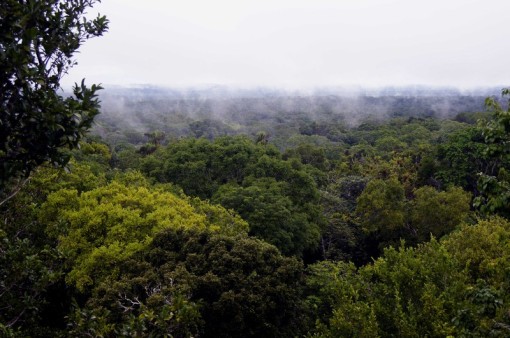A new global map displays the functionality of
ecosystems
A new study explores which continental areas have the highest functionality. These are of major relevance for the
sustainability of the biosphere and they are areas, which supply most services to humanity. Especially with regard to climate change these exceptionally functional areas deserve particular
protection.
Ecosystems absorb solar energy and convert it to ecosystem services usable by humans. For example they provide biomass, which can
serve as food, construction material or energy resource, or they regulate the climate and store water. Basic functions such as photosynthesis and the maintenance of nutrient circles are crucial for
the provision of ecosystem services. The ability of Earth´s surface to absorb, transform and store energy is a result of ecosystem processes. In this respect, some ecosystems are more efficient than
others. According to current theories and outcomes, this is a result of the complexity and diversity of ecosystems with higher functionality leading to a diversification of pathways for energy
storage and dissipation. Furthermore, the amount of living and dead biomass is of high significance. Ecosystems with higher functionality are more resilient towards disturbances such as fluctuations
in temperature and precipitation. Functional ecosystems have a special importance for mankind because they also regulate the adaptability of nature to climate change.
The study was carried out by the Centre for Econics and Ecosystem Management of Eberswalde University for Sustainable Development
and published in the international journal “Ecological Complexity”. It addresses the question where the most functional regions are located. The team of authors led by Lisa Freudenberger identified
indicators for the functionality of ecosystems, combined and mapped them for all continents. Highest values were found in many tropical and subtropical rain forests such as the Amazon region.
Nevertheless, boreal and temperate zone in Canada, Russia and Scandinavia were found to be important as well. Global conservation strategies give less consideration to these areas due to their
relatively low levels of species richness if compared to the tropics.
“In the global context, the regions we have identified in the study are the most important ones for the provision of ecosystem services and deserve particular protection”, says Lisa Freudenberger.
“Our work is the basis for a new approach to priority-setting in nature conservation”, says Prof. Pierre Ibisch, head of the research group.
The study was carried out in the framework of the cooperative graduate programme “Adaptive
Nature Conservation to Climate Change” of the University for Sustainable Development Eberswalde, Potsdam University and the Potsdam Institute for Climate Impact Research as well as the junior
research group “Regional adaptation strategies towards accelerating climate change – Ecosystem Services/Biodiversity”. This research project is
supported by the Ministry of Science, Research and Culture through funds of the European Social Fund and the Land Brandenburg.

Interaction of forest ecosystem and atmosphere in the Maya rain forest, Guatemala (P. Ibisch, 2012)
ABOUT THE AUTHORS
Lisa Freudenberger is at the University for Sustainable Development Eberswalde (University of Applied Sciences), Faculty of Forest and Environment, Alfred-Möller-Str. 1, 16225 Eberswalde, Germany, and the Centre for Econics and Ecosystem Management, Alfred-Moeller Str.1, 16225, Eberswalde, Germany.
Peter Hobson is at Writtle College, University of Essex, Chelmsford, Essex CM1 3RR, UK, and the Centre for Econics and Ecosystem Management, Alfred-Moeller Str.1, 16225, Eberswalde, Germany.
Pierre Ibisch is at the University for Sustainable Development Eberswalde (University of Applied Sciences), Faculty of Forest and Environment, Alfred-Möller-Str. 1, 16225 Eberswalde, Germany, and the Centre for Econics and Ecosystem Management, Alfred-Moeller Str.1, 16225, Eberswalde, Germany.